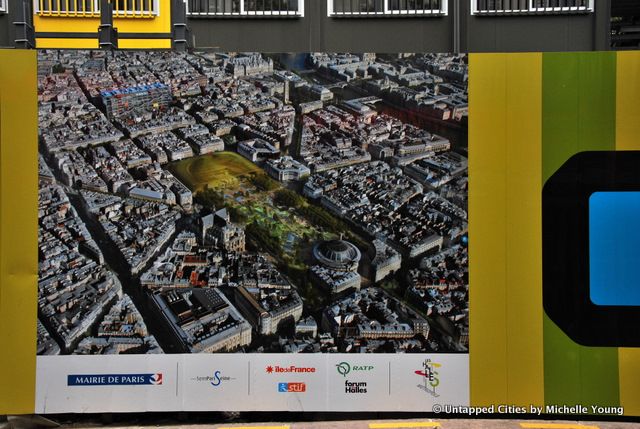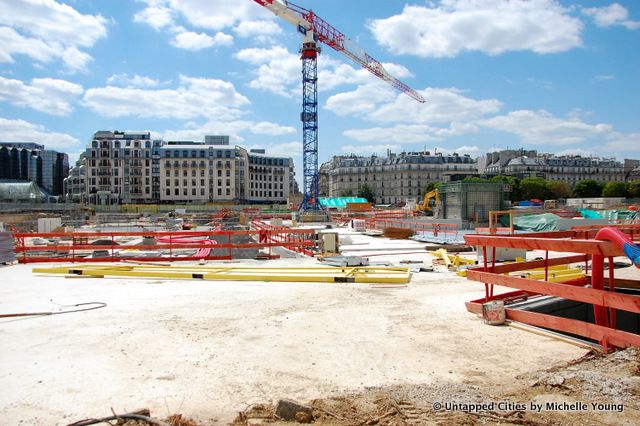Last Chance to Catch NYC's Holiday Notalgia Train
We met the voices of the NYC subway on our nostalgia ride this weekend!


Kudos to the French for color coordinating the modular offices in the construction site with the advertisements about the new Les Halles. Especially good news since the construction is slated to go for another 5 years, planned to be completed in 2016. In French time, this probably means 2017. But are these fun colors to deflect from a more serious debate underlying the project?
Les Halles is a site wrought with controversy, from the demolition of the 19th-century glass and steel pavillions during the 1970s, to the subsequent transformation of the site into a gathering place for residents from the banlieues (the suburbs of Paris), to the competition to revitalize the space. In 2005, Nicholai Ouroussoff lambasted the city’s effort, saying “The tragedy here is the low level of ambition.” Though not overtly spoken, central to the debate over the plans seemed to be the targeted audience of the new space. Les Halles is a magnet for the minorities from the banlieues, a result of the convergence of the RER regional trains. The contrast is felt when you shift just one street away on the upscale pedestrian thoroughfare, Rue Montorgueil. But the final project by David Mangin had both popular and political support. The architect said, “Les Halles has become a place that Parisians avoid. It should be a place people want to go to. It should become a major public space – like the Louvre or the Tuileries gardens.” (from www.projetleshalles.com.). In essence, the design was to negate the place that Parisians associated with “blight.” Ouroussoff also wrote, “Arab and African immigrants from those neighborhoods have made the underground mall one of the most profitable in the city. Keeping them trapped underground serves the interests of developers and soothes the fears of the gentrified classes that live nearby.”
Meanwhile, Ouroussoff felt that the whimsical plan by Rem Koolhaas tried to achieve an opposite social goal:
“Like Haussmann before him, he [Koolhaas] planned to attack central Paris with surgical precision. Yet rather than eliminate the social forces that Haussmann feared, Mr. Koolhaas wanted to let that energy seep out into the open and infect the city. The idea is to bind the two visions of Paris into a cohesive whole, in a genuinely contemporary view of how cities function.” Koolhaas wanted to create multiple centers within the park, decentralizing activity in Les Halles through the multi-colored glass towers that would link to the underground mall.
As odd as Koolhaas’ plan may seem visually, it would have been in line with Paris’ past architectural and public space decisions–Beauboug (the Pompidou Center), Parc de la Villette–and would not have been a generic park that could have been designed for any city.
Here’s the final plan that will go into effect:

Today, construction is in full swing. What do you think of the plans for Les Halles?

Subscribe to our newsletter